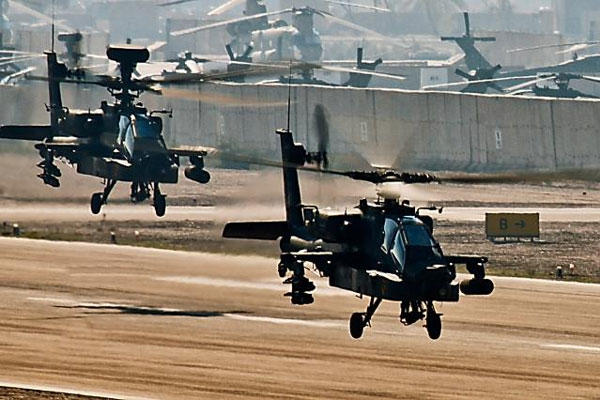U.S. Army leaders are scheduled to issue their formal plan today for dealing with recommendations from a highly-publicized National Commission on the Future of the Army report.
The report, ordered by Congress, features 63 recommendations on key areas such as modernization and investment, force structure, readiness and end-strength.
Army Chief of Staff Gen. Mark Milley told Congress recently that the Army plans to submit an April 15 report to Defense Secretary Ashton Carter that details the service’s plans for each of the recommendations.
The Army has done a “very rigorous study of the 63 recommendations,” Milley told lawmakers recently.
“Right now, more or less, about 50 or so we think are achievable with relatively little or no cost or we started doing them,” Milley said at an April 7 hearing before the Senate Armed Service Committee.
The remaining recommendations will “incur some or significant cost in terms of dollars” on the Army if it chooses to follow them, Milley said, referring the report’s recommendations that deal with aviation assets.
“The Commission was specifically directed to address the proposal to transfer all Apache attack helicopters (AH-64s) from the Army National Guard to the Regular Army as one part of the Army’s broader Aviation Restructure Initiative (ARI),” according to the commission report.
The Commission concluded that the ARI is a “well-crafted plan that holds down costs while maintaining a reasonable level of wartime capacity in the Apache fleet.”
The National Guard Bureau has proposed an alternative of keeping 11 Apaches in the Guard, the report states. This alternative would add between about $90 million and $175 million a year to the aviation operating costs, the commission maintains.
“The NGB Alternative would also involve between $220 million and $420 million in one-time costs to provide an additional eleven Apache helicopters. The range depends on whether the additional eleven Apaches are new or remanufactured aircraft,” the report states.
The commission found, however, that ARI “results in a lack of strategic depth, providing for no wartime surge capability in the Army National Guard.”
“After extensive analysis, and numerous discussions with proponents of various plans, the commission recommends that the Army maintain twenty-four manned Apache battalions— twenty in the Regular Army and four in the Army National Guard,” the report states.
All the active Army battalions would be equipped with twenty-four aircraft. The four Army National Guard battalions would be equipped with eighteen aircraft, the commission recommends.
“To hold down costs, Option Three assumes that only two Black Hawk battalions are added to the Army National Guard (compared with four under the ARI). This approach, which is also used by the NGB Alternative, would result in a reduction in operational Black Hawk aircraft by about 3 percent,” the report states.
Under the commission’s option, the Army would “commit to use the Army National Guard battalions regularly—mobilizing them and deploying them in peacetime.”
The report also makes other recommendations concerning Army aviation.
“The Army faces significant shortfalls. Army aviation represents a key example,” the report states. “Today, some aviation assets cannot meet expected wartime capacity requirements."
The Army should retain eleven combat aviation brigades in the regular Army and maintain a forward-stationed combat aviation brigade in Korea, the commission recommends. Currently, the Army plans reduce its combat aviation brigades from 11 to 10 CABs.
So far, Milley has only named one recommendation that the Army will not consider. It involves cutting two infantry brigade combat teams in the active Army “to provide manpower spaces that could be used to decrease higher priority risks.”
The general has testified that infantry brigades are a key part of the Army's "foxhole strength” that the Army is unwilling to reduce.
Milley also testified that the aviation recommendations make strategic and operational sense, but they will be very expensive to execute without additional money from Congress.
The report also recommends that the Army should “increase Armored Brigade Combat Team (ABCT) capacity based on the current and projected threat environment. Risk may be acceptable without additional ABCT structure if the Army stations an ABCT in Europe.”
The Army has already set up a rotation plan to ensure that it has one ABCT in Europe at all times.
--Matthew Cox can be reached at matthew.cox@military.com.



























